
Compass projects lower qualifying scores for the Class of 2027
The junior year PSAT is also the NMSQT — the National Merit Scholarship Qualifying Test. Each year, National Merit recognizes the top 57,000 test takers. In order to be included in that group, students need to be among the top 4% of the 1.4 million students who take the PSAT. Of that elite group, approximately 17,000 are recognized as Semifinalists for having the highest scores within their states. Semifinalists have the opportunity to continue in the program to become Finalists and, potentially, scholarship recipients. The remaining 40,000 students are recognized as Commended Students. More information can be found in our National Merit Explained post.
For the Class of 2027, the exact scores needed to qualify (“cutoffs”) will not be released until September 2026 (the Commended cutoff is likely to leak in April). In order to give students context for their test results, Compass has analyzed the scores from the October 2025 to produce estimates for the national Commended cutoff and the individual state cutoffs. We predict that the majority of state cutoffs will decline this year.
National Merit uses the Selection Index (SI), found on the PSAT score report, to rank students. The Selection Index can be calculated by doubling the Reading & Writing score (RW), adding the Math score (M), and dividing that sum by 10. For example, a student with a 720 RW and 700 M score has a Selection Index of 214 — (720 x 2 + 700)/10. The weighting of the index means that not all students with a 1420 Total Score have the same SI. A student with a 700 RW and 720 M has a Selection Index of 212. The highest SI a student can receive is 228 (760 RW and 760 M). Last year, the Commended cutoff was 210, and Semifinalist cutoffs ranged from 210 to 225 depending on the competitiveness of the state.
Why do we foresee lower cutoff scores?
College Board does not release any information about the distribution of Selection Indexes, but it does produce summaries of broad score ranges. The number of students in the 1400 – 1520 Total Score range has proved to be an excellent indicator of the Commended cutoff. The Class of 2027 saw 16% fewer top scores than did last year’s class. The 52,400 students at 1400 and above is closer to what we saw two years ago with the Class of 2025 and, going back further, similar to the results for the Classes of 2017 and 2021.
Most of the students who will qualify for National Merit recognition fall in the 1400 – 1520 band (or just outside it). With approximately 10,000 fewer students in the top band of scores this year, we expect the Commended level to drop to 208 or 209. The chart below shows the historical relationship between high scores and the Commended cutoff.
Explaining why last year’s cutoffs reached record levels
After examining this year’s numbers, we also have a better understanding of why Semifinalist cutoffs jumped to such extreme levels last year, and why it should not happen again. The 2024 PSAT saw an unprecedented 18% jump in the number of high Reading & Writing scores (700-760). The weighting of RW in the Selection Index magnified the impact of that change. The table below shows scores for the last three years and how results have fluctuated.
On the 2025 PSAT, the number of high RW scores dropped by 27%. In fact, the RW count for this year is even lower than it was two years ago. The decline in RW scores could even produce Selection Indexes lower than those in the Class of 2025 — at least in some states. The Commended cutoff may provide additional insight in the spring.
The ratio of 700+ M scores to 700+ RW scores reveals just how bizarre last year’s spike was. Traditionally, Math scores have higher distributions at the extremes. There are more very high Math scores on the PSAT and SAT, and there are more very low Math scores.
On the October 2024 PSAT, though, almost as many students scored 700-760 on RW as did on Math. The ratio of high Math scores to high RW scores was 1.02. This helps explain why some cutoffs went as high as 224 and 225 for the first time ever. Students achieved 750 and 760 RW scores in record numbers. In most years, there would be more students scoring 730 RW and 760 M (222 SI), for example, than scoring 760 RW and 730 M (225 SI). That was not true in the the Class of 2025, where there was a more equal distribution. It appears that scores for the Class of 2027 have returned to the traditional Math-heavy distribution. The ratio of high Math scores to high RW scores was 1.33 on the 2025 PSAT/NMSQT. For this reason, we don’t believe we will see a repeat of the 224 and 225 cutoffs seen last year.
Was last year a fluke, shift, or a trend?
The results from the Class of 2027 have answered one of the nagging questions from last year: Were the high cutoffs a fluke, shift, or trend? The answer appears to be fluke. More accurately, results could be labeled an error in test construction and scaling. There is no evidence that the Class of 2026 possessed special test-taking skills. As sophomores, that class performed in line with expectations on the 2023 PSAT. There is no evidence that the Class of 2027 has diminished skills. As sophomores, the class saw the same inflated scores as did the juniors on the 2024 PSAT. The best explanation is that College Board lost control of the scale. College Board dramatically shortened the PSAT when it switched from paper to digital. On the paper test, the Reading and Writing sections had 91 questions, and students were given 95 minutes. The RW on the digital PSAT is truncated to 54 questions over 64 minutes. And only 50 of the questions count toward a student’s score! A shorter exam means a less reliable exam. We saw the occasional wild ride on the paper PSAT, but the rides may get wilder and more frequent on the digital PSAT.
We anticipate the majority of state Semifinalist cutoffs to decline for the Class of 2027. Knowing this overall trend, however, doesn’t tell us which states will be in that majority or how much lower scores will go. The table below provides a Most Likely cutoff score, but the more useful information is the Estimated Range. Almost all cutoffs should fall within that range.
State | Class of 2027 (Most Likely) | Class of 2027 (Est. Range) | Class of 2026 (Actual) | Class of 2025 (Actual) | Class of 2024 (Actual) | Avg NMSFs |
|---|---|---|---|---|---|---|
| Alabama | 213 | 210 - 216 | 214 | 212 | 210 | 250 |
| Alaska | 214 | 210 - 216 | 215 | 214 | 209 | 35 |
| Arizona | 218 | 215 - 220 | 218 | 217 | 216 | 398 |
| Arkansas | 213 | 210 - 216 | 215 | 213 | 210 | 143 |
| California | 223 | 220 - 224 | 224 | 221 | 221 | 2,115 |
| Colorado | 218 | 216 - 221 | 219 | 218 | 216 | 286 |
| Connecticut | 222 | 220 - 223 | 223 | 221 | 221 | 175 |
| Delaware | 219 | 218 - 221 | 220 | 219 | 219 | 44 |
| Florida | 217 | 216 - 220 | 219 | 217 | 216 | 999 |
| Georgia | 219 | 217 - 221 | 220 | 218 | 217 | 602 |
| Hawaii | 218 | 215 - 220 | 219 | 217 | 217 | 62 |
| Idaho | 214 | 211 - 217 | 215 | 213 | 211 | 96 |
| Illinois | 220 | 218 - 222 | 222 | 220 | 219 | 704 |
| Indiana | 217 | 214 - 219 | 218 | 217 | 216 | 313 |
| Iowa | 213 | 211 - 216 | 214 | 212 | 210 | 145 |
| Kansas | 216 | 213 - 219 | 216 | 215 | 214 | 144 |
| Kentucky | 214 | 211 - 217 | 214 | 213 | 211 | 201 |
| Louisiana | 215 | 212 - 218 | 216 | 214 | 214 | 222 |
| Maine | 215 | 212 - 217 | 217 | 214 | 213 | 55 |
| Maryland | 223 | 221 - 225 | 224 | 222 | 221 | 308 |
| Massachusetts | 223 | 221 - 225 | 225 | 223 | 222 | 318 |
| Michigan | 219 | 216 - 220 | 220 | 218 | 217 | 485 |
| Minnesota | 218 | 216 - 220 | 219 | 217 | 216 | 279 |
| Mississippi | 213 | 210 - 215 | 213 | 212 | 209 | 155 |
| Missouri | 216 | 213 - 218 | 217 | 215 | 214 | 289 |
| Montana | 211 | 208 - 214 | 213 | 209 | 209 | 47 |
| Nebraska | 213 | 210 - 216 | 214 | 211 | 210 | 105 |
| Nevada | 214 | 211 - 217 | 214 | 214 | 211 | 168 |
| New Hampshire | 217 | 214 - 219 | 219 | 217 | 215 | 60 |
| New Jersey | 223 | 222 - 225 | 225 | 223 | 223 | 451 |
| New Mexico | 211 | 208 - 214 | 210 | 211 | 207 | 104 |
| New York | 221 | 219 - 223 | 223 | 220 | 220 | 1,012 |
| North Carolina | 219 | 216 - 221 | 220 | 218 | 217 | 510 |
| North Dakota | 210 | 207 - 212 | 210 | 210 | 207 | 30 |
| Ohio | 218 | 215 - 220 | 219 | 217 | 216 | 538 |
| Oklahoma | 212 | 208 - 214 | 212 | 211 | 208 | 204 |
| Oregon | 218 | 215 - 220 | 219 | 216 | 216 | 188 |
| Pennsylvania | 220 | 217 - 222 | 221 | 219 | 219 | 596 |
| Rhode Island | 217 | 214 - 220 | 219 | 217 | 215 | 47 |
| South Carolina | 214 | 210 - 217 | 215 | 214 | 209 | 236 |
| South Dakota | 210 | 207 - 213 | 211 | 208 | 209 | 42 |
| Tennessee | 218 | 215 - 219 | 219 | 217 | 217 | 319 |
| Texas | 221 | 218 - 222 | 222 | 219 | 219 | 1,623 |
| Utah | 212 | 210 - 216 | 213 | 211 | 209 | 196 |
| Vermont | 215 | 211 - 217 | 216 | 215 | 212 | 28 |
| Virginia | 222 | 220 - 224 | 224 | 222 | 219 | 437 |
| Washington | 222 | 220 - 224 | 224 | 222 | 220 | 348 |
| West Virginia | 209 | 207 - 212 | 210 | 209 | 207 | 64 |
| Wisconsin | 214 | 213 - 217 | 215 | 214 | 213 | 292 |
| Wyoming | 209 | 207 - 212 | 210 | 209 | 207 | 24 |
| District of Columbia | 223 | 222 - 225 | 225 | 223 | 223 | 36 |
| Territories | 209 | 207 - 211 | 210 | 208 | 207 | 39 |
| Outside US | 223 | 222 - 225 | 225 | 223 | 223 | 86 |
| Commended | 209 | 207 - 210 | 210 | 208 | 207 |
How cutoffs are determined
Qualifying scores (“cutoffs”) are not based on the total score for the PSAT (360-1520) but on the Selection Index, which is calculated by doubling the RW score, adding the Math score, and then dividing the sum by 10. The maximum Selection Index is 228. Students can find a historical set of cutoff data here or see how Semifinalist and Commended counts have changed state by state.
We estimate that the Semifinalist cutoffs will range from 209 to 223. Semifinalists are allocated by state, and cutoffs are calculated by state. If Florida is allocated 1,000 Semifinalists based on its population of high school graduates, then NMSC works down from a perfect 228 Selection Index until it gets as close as possible to that target. Last year, 1,008 students scored at or above the cutoff of 219. A cutoff of 220 would have produced too few Semifinalists. A cutoff of 218 would have gone over the allocation. Because score levels can get crowded, it is easy for cutoffs to move up or down a point even when there is minimal change in testing behavior or performance.
Why does each state have its own Semifinalist cutoff if the program is NATIONAL Merit?
This is always a hot button question. NMSC allocates the approximately 17,000 Semifinalists among states based on the number of high school graduates. That way, students across the nation are represented. It also means that there are very different qualifying standards from state to state. A Massachusetts student with a 220 might miss out on being a Semifinalist. If she lived 10 miles away in New Hampshire, she would qualify.
No Semifinalist cutoff can be lower than the national Commended level. Cutoffs for the District of Columbia and for U.S. students studying abroad are set at the highest state cutoff (typically New Jersey). The cutoff for students in U.S. territories and possessions falls at the Commended level each year. Boarding schools are grouped by region. The cutoff for a given region is the highest state cutoff within the region.
Change is always the theme
Over the last two decades, at least half of the state cutoffs have changed each year. In some years, as many as 49 states saw ups or downs, usually because of questionable test forms. In addition to last year’s exam, the PSATs from 2011 (Class of 2013), 2016 (Class of 2018), and 2019 stand out as problematic. The anomalous 2019 results could be traced back to a particularly mis-scaled form, which I wrote about at the time. The Class of 2014 also saw significant changes, but those were more of a bounce-back from the previous year. The question for the Class of 2027 is how much of a bounce-back will be seen this year.
Cutoffs are particularly bumpy in states with smaller pools of test takers and National Merit Semifinalists. Over the last dozen years, cutoffs in the 12 largest states have remain unchanged 36% of the time, while the cutoffs in the smallest states have remain unchanged only 1 time out of every 5. No large state’s cutoff has jumped by more than 3 points in a year, whereas 6-point changes have occurred in the pool of smaller states.
When are National Merit Semifinalists announced?
The lists of Semifinalists will not be distributed to high schools until the end of August 2026. With the exception of homeschoolers, students do not receive direct notification. NMSC asks that schools not share the results publicly until the end of the press embargo in mid-September, but schools are allowed to notify students privately before that date. NMSC does not send Commended Student letters to high schools until mid-September. Compass will keep students updated on developments as the dates approach.
Do state and national percentiles indicate whether a student will be a National Merit Semifinalist?
No! Approximately 1% of test takers qualify as Semifinalists each year, so it is tempting to view a 99th percentile score as indicating a high enough score — especially now that College Board provides students with percentiles by state. There are any number of flaws that rule out using percentiles as a quick way of determining National Merit status.
- Percentiles are based on section scores or total score, not Selection Index
- Percentiles are rounded. There is a large difference, from a National Merit perspective, between the top 0.51% and the top 1.49%
- Percentiles reveal the percentage of students at or below a certain score, but the “at” part is important when NMSC is determining cutoffs.
- The number of Semifinalists is based on the number of high school graduates in a state, not the number of PSAT takers. Percentiles are based on PSAT takers. States have widely varying participation rates.
- Most definitive of all: Percentiles do not reflect the current year’s scores! They are based on the prior 3 years’ performance. They are set even before the test is given. And if you are going to use prior history, why not use the record of prior National Merit cutoffs rather than the highly suspect percentiles?
Entry requirements for National Merit versus qualifying for National Merit.
Your PSAT/NMSQT score report tells you whether you meet the eligibility requirements for the NMSP. In general, juniors taking the October PSAT are eligible. If you have an asterisk next to your Selection Index, it means that your answers to the entrance questions have made you ineligible. Your answers are conveniently noted on your score report. If you think there is an error, you will also find instructions on how to contact NMSC. Meeting the eligibility requirements simply means that your score will be considered. Approximately 1.4 million students enter the competition each year. Only about 55,000 students will be named as Commended Students, Semifinalists, Finalists, or Scholars. See National Merit Explained for more information.

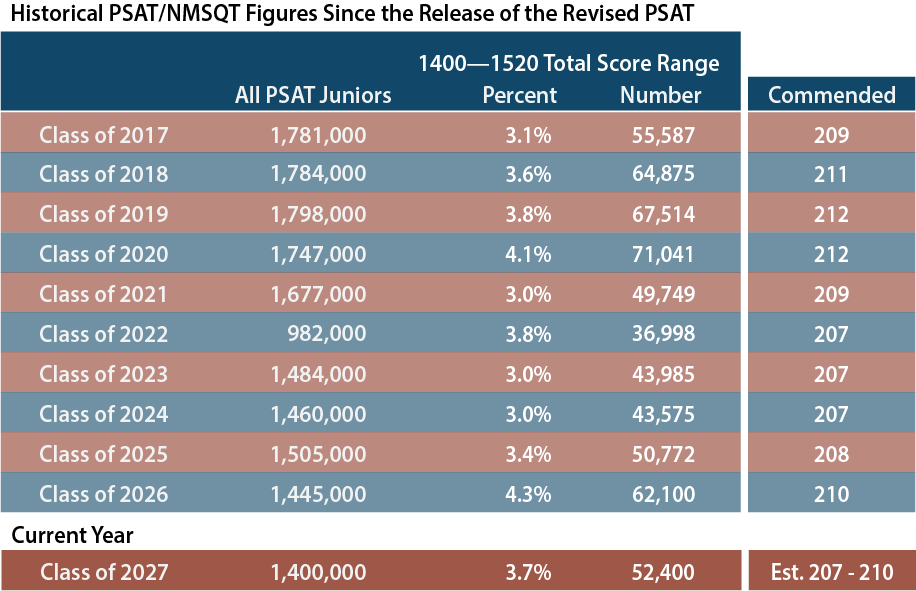
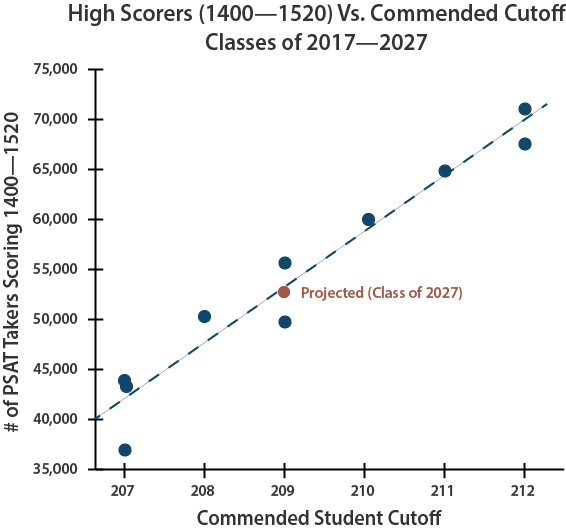


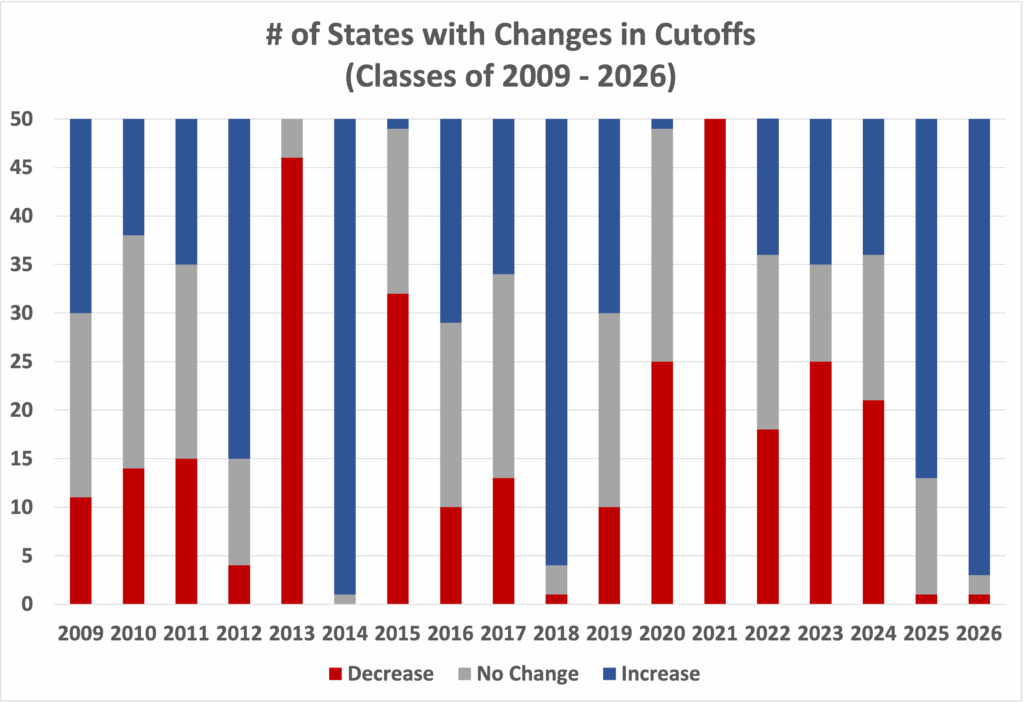
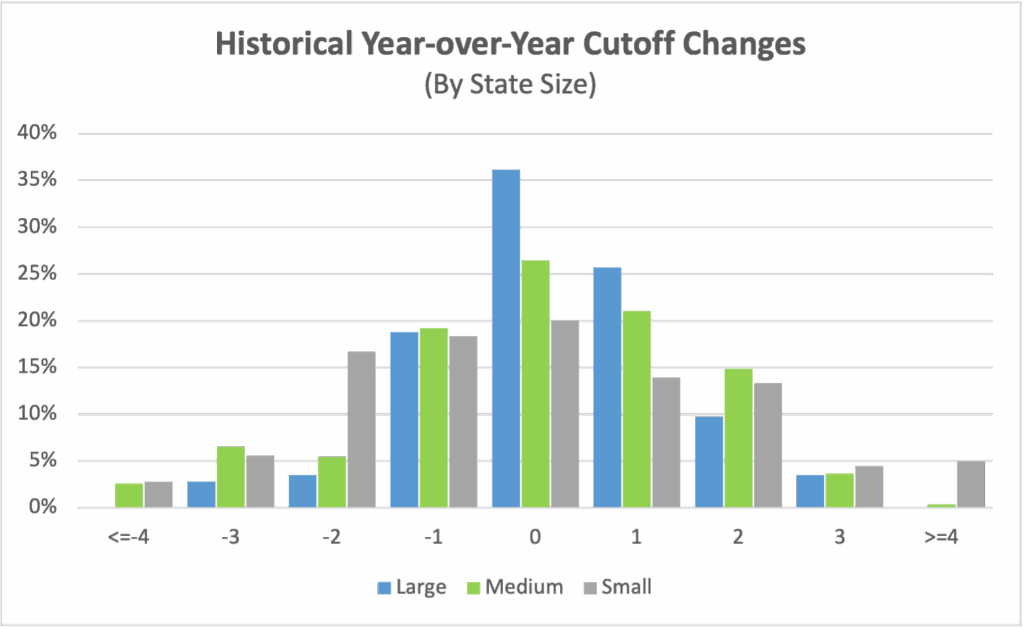
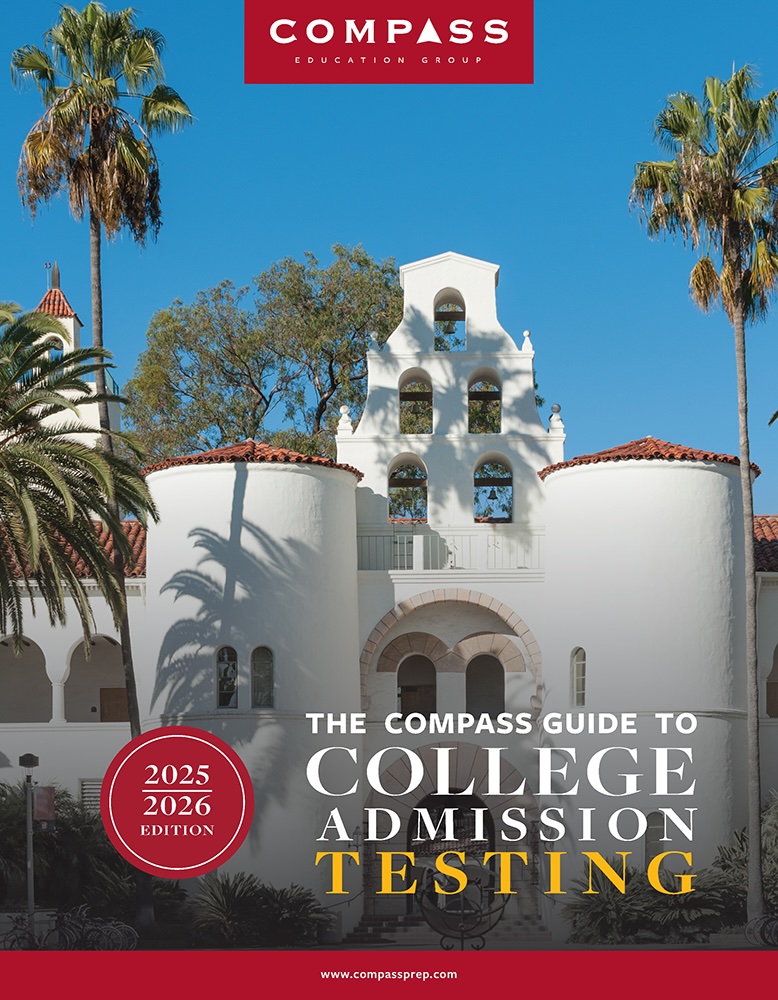
Hi Art,
Thanks for all your guidance during the last several months. We called our school but they didn’t disclose to use whether my daughters made it and so didn’t report back to you. BTW, my twins were are 224 and 228 (CA) so based on your post today both made it.
Thanks again.
Umesh,
You are welcome. It’s always great when both twins qualify. Congratulations and congratulations!
Will there be a public listing of SemiFinalists by state? If so, when will that be available? If not on your website, is there another where that information will be posted? Thank you!
D,
It’s haphazard. NMSC will send list of names to relevant news outlets on 9/11. It’s up to the news outlets as to whether or not they do anything with the information. Some papers or websites will upload the entire states. Many others will just cherry-pick local students. I usually try to post links where whole states are available, but they sometimes don’t pop up until a week after the release.
Are there any scholarship opportunities for Commended Students? What does that “mean”?
Jenn,
The Commended Student designation is used to recognize students that are among the best in the country — at least as far as PSAT scores. The analogy I would use is being named to the Dean’s List. It signifies a job well done even if it doesn’t come tied to any dollar amount. I don’t track all of the scholarship opportunities because there are just too many colleges, and the changes happen too frequently. In the past, I have seen colleges offer scholarships based on Commended status.
Thanks so much for all this great information. We live in FL and my twin daughters qualified (222/224). We were pretty sure we made the cutoff when we received their scored in December and I saw your updated cutoffs this morning. Then this afternoon, my girls were called to the principal’s office to make it all official.
Congratulations to your daughters, Penny!
You say that to receive one of the college-sponsored scholarships, students must list their first choice college on the Finalist application, but they can leave it as Undecided. When do students have to change their Undecided to a named school? And they have until October to complete the application? Thanks.
Katie,
The final deadline for a change is May 31, but there are interim deadlines that can be important. Some colleges, for example, want to be listed as First Choice before that data. I believe the earliest deadline is March 1. Keep in mind that Finalists aren’t even notified until February, so there is plenty of time to find out more. NMSC is very helpful on this score. Yes, the application must be completed by early October.
Hello,
Is this the final cutoff numbers for Arizona. My son has 220. did he made it.
Vinay,
Yes, the cutoffs are final. Your son’s score would qualify him as a Semifinalist. Congratulations!
Minnesota is 219 and my daughter got 219. Does she is in?
Yes, congratulations!
Thanks for the confirmation.
If i scored a 221 in Texas am I guaranteed to qualify? I’m a bit nervous as my score is right on the cutoff
Anthony,
As long as students meet eligibility requirements such as citizenship status and junior year standing, all 221 scores will be named as Semifinalists.
Any advice on how to move from Semi-Finalist to Finalist status? My son’s SI was 225, and his confirming scores are 1590 on the SAT and 35 on the ACT. Do you know if the Finalist selection based more on scores or on extracurriculars, essays, and recommendations? Or is it a combination of everything?
Kristin,
At the Finalist level, only a few things matter. (1) A confirming SAT/ACT score. (2) “Consistently high” academic performance. (3) The recommendation of your son’s high school. (4) A completed application. Things like extracurriculars, the content of the essay, and even the SAT/ACT above and beyond the confirming level are only considerations at the Scholar stage. While this is the 2019 information sheet, everything still applies except that ACTs can now be used as confirming scores: https://nationalmerit.imodules.com/s/1758/images/gid2/editor_documents/merit_r_i_leaflet.pdf?sessionid=30eb0934-6aa1-46a0-8381-ccf481a4ddb0&cc=1 .
Thank you, Art. That information is helpful. If a Finalist student applies ED to a non sponsoring school and is rejected, it seems the student would still have time to name a top choice for a NMSC sponsoring school, correct? Just trying to weigh options.
Exactly. As long as students stay on top of it, there is not a problem.
Great! Any idea when/where the press releases and official lists will be posted? I’m seeing a few random news articles today (9/11), but no official lists that I can find online.
Kristin,
NMSC doesn’t itself put out an “official” list. It’s completely up to news outlets on whether to publish. As you are finding, it’s completely haphazard.
Yes, the notification is completely haphazard. I managed to get my hands on the TX press release, so at least I know my son is officially on the list. His school has not notified students yet. I emailed the principal today, and he claimed to have no information. Weird!
Hello Mr. Sawyer, If my son is a semifinalist, will he be receiving details on how to submit finalist application from school / college board via email. I am unable to locate the application online. Please advise
Anna,
The entire application is done via an online portal only accessible to Semifinalists. You will receive login information from your school.
Our daughter was a freshman and sophomore in CA but took the PSAT in MA due to a move last summer – she earned a 222 score. Looks like the move may have cost her a semi-finalist designation? Would she qualify for commendation status in MA?
Em,
Yes, her score qualifies for Commended status. As long as she was a student in MA when she took the PSAT in junior year, then unfortunately she would need to hit the MA cutoff.
Art – I want to thank you for the updates on this site, this has been tremendously helpful. At 222 in CA we have still not heard anything formally, and so your efforts have been even more help than you can imagine. Wanted to pass along my sincere appreciation.
Regards
CA parent
Thanks, CAhopeful. Keep an eye out for the Mercury News website tomorrow. In the past, they’ve uploaded the CA list to Scribd.
Hey! I have my son’s PSAT score, but can’t find these cutoffs anywhere else, and his school hasn’t notified us yet. Where did you find these cutoffs? Or how did you calculate them?
KBCT,
What I can tell you is that they are official and reliable. NMSC does not publish its cutoffs, so you won’t find confirmation there. Tomorrow is the press release day when NMSC, and many schools wait until that day. If your son does not hear tomorrow, I would either talk to his counselor or call NMSC directly.
My son got SI of 216 in Louisiana, but until this point we still do not get any notice from school , and no press publishes anything either today, I wonder if my son make it to commended or semifinalist.
Some schools have still not received their packets. If you are nervous, I would go ahead and call NMSC. They can verify your status, but can’t give you your login credentials for the Finalist application.
Thanks, Art. I finally found out my son’s name on the press on 9/11, he made it to the semi-finalist. I have been waiting for more info from his school. But until today 9/13, my son still does not get the notification and the package from school. At this point, does school not know my son is semi-finalist or the school still waits for the packet to notify my son? Thanks!
Yanny,
Congratulations! Some schools are late in receiving notifications or need a few days to get things organized. If your son doesn’t hear from the school on Monday, I would contact his college counseling department. As I’ve mentioned to others, there is no need to panic. There are still several weeks before applications are due, and he can begin working on his essay.
I’m a little unsure about what the commended cutoff means? My son has an index of 218 in NC.
Student’s whose scores are lower than the Semifinalist cutoff but are 212 or higher will receive Commended Student status. In your son’s case, he would be Commended.
We are in NC and your confirmed minimum is 219. My son has a 219, however, his school says they have not received a letter from NMSC. What do we do now? Thanks!
Anne,
Hold on for another day or two. Tomorrow is the “press release” day. Until then, NMSC won’t discuss specifics. If you call them tomorrow or later this week (their phones are likely to be off the hook), they will usually be nice enough to confirm one way or the other. Also, schools without NMSF will still typically receive notice from NMSC. So if your son’s school has received nothing, it may just be a mail delay.
My score exactly matches the cutoff for AZ. Does this mean I qualified or just missed it?
Qualified! Congratulations.
My son got a 222 in Oklahoma!
He didn’t even make it close! Congratulations to your son.
Is the press release guaranteed for tomorrow, September 11th?
It is, but whether the press publishes anything is not something NMSC controls. You can now contact NMSC, though, if you need to find out about a specific student.
Hello,
I am a student in Michigan with a 219 selection index. However, I have not yet been notified of semifinalist standing. Is it certain that 219 is the Michigan cutoff?
Thank you
Connor,
If you still haven’t heard, check with your school or contact NMSC. Today was the end of the “press embargo,” so NMSC can now confirm a student’s status. The 219 cutoff is correct.
yes, just got it!
My son got a 225 in Kansas! Woohoo! Do you know where it will be published in the Kansas City area? Do universities get SI scores or just names of recipients?
Woohoo, indeed! I have not seen the Kansas City area yet, but my Googling has been limited by work matters. I’m reasonably certain that NMSC does not share SI scores.
well, this is not news, but i have been waiting about nine months to make this comment so i’ll make it anyway!
i called national merit this morning, and my son (texas 225) was confirmed as a semi finalist. this might be helpful to someone else who is attending a school like ours, who apparently, does not receive mail. just yesterday, our school said that they hadn’t heard anything yet. since the press release came out today, i knew that national merit would confirm over the phone. so, i called them, and they did just that. they were very, very nice.
so, if anyone is out there waiting and waiting…. you can call national merit on the day that the names are released to the press and they will confirm for you over the phone and tell you what to do. thanks art for all your help through the process!
Thank you very much! This was an extremely helpful note! And the office is very friendly.
My son received a notice that he is a semi finalist. We are in Texas and he got a 225. We are surprised because he is a Canadian citizen and we thought he didn’t qualify based on what we had read. We are not permanent residents but have lived here for 10 years. Did the rules change or is it that he will be recognized but can’t earn the scholarship?
Angela,
The rules have not changed. Unfortunately, the NM Scholarship Program is reserved for U.S. citizens and permanent residents intending to become U.S. citizens. This explains the full rules.
Hi Art, wanted to let you know my son is a National Merit semi finalist. We received the links for finalist application. In the application portal it has the “requirements and instructions for semi finalist” It clearly states that you need to “Attend high school in the United States, District of Columbia, or US Commonwealths and territories; OR meet the citizen requirements for students attending school outside the united states” Just wanted to let you know the rules HAVE changed! He almost didn’t bother to write it because we didn’t think he was eligible. We are excited for him!
Wow! That’s great news, and I’ll definitely update our FAQ. It sounds like they’ve made a good call to ignore citizenship status for those studying in the U.S. I see that they’ve updated the information in the PSAT/NMSQT Student Guide, too. Thank you, and congratulations to your son!
In South Dakota my daughter has a 216 but last April her principal told her she was a commended student. Could she still be a semi finalist?
Elizabeth,
In April, her principal would only have known that she was AT LEAST a Commended Student. Semifinalists and cutoffs are not even determined by April. Based on her SI of 216, she will be a Semifinalist. Check again with you principal or with NMSC. Congratulations!
Thank you so much for the clarification!
My son just missed the cutoff for semi finalist in TX. He was notified last February that he was eligible for NHRP recognition and will hopefully receive that notification soon. Will he be officially notified somehow that he is commended? And if so, would it be the school or NMSC that notifies him? Thanks for the great information you provide!
TXmom,
I don’t have the notification date. NHRP is a College Board program and is not managed by NMSC. Instead, College Board contracts with Scholarship America to handle logistics. Notifications are sent by mail directly to the student in the “fall.” You can contact them for more information. https://www.scholarsapply.org/nhrp/instructions.php
My daughter is home-schooled. We received a letter in April saying she scored among the 50,000 highest scoring participants and would be “recognized” in the fall. When are commended students notified?
Janet,
Traditionally the Commended notifications go out right after the press release for Semifinalists. That was today, of course, so I think NMSC should be sending them soon.
Thank you.
Thank you so much Mr.Art! Information on this page is very helpful. My son’s name listed on the state published semi finalist list, however the school did not say anything yet. Do you know when is the deadline for the next step which is applying for finalist? Thanks in advance.
Hema,
Last year the deadline was October 10, so I assume that it will be in the same week this year. [Perhaps one of the Semifinalists can update me on this.] Other than the essay, the application is simple. You can find the essay topic in our National Merit FAQ.
In an email from my daughter’s school, it states Oct 9th as the application deadline
Thank you, Gale.
Yes. I received the paper for Semifinalists and it said October 9th was the deadline.
Great! Thank you Elijah.
Thank you for all the information! My daughter got her letter today from her counselor. She got 222 in NC! The deadline for semifinalist application is October 9, 2019.
Congratulations to your daughter, Carol! I’ll update the FAQ to let people know about the 10/9 deadline.
Thank You.
Thank you Art.
I have a student in Massachusetts with a selection index of 224, and his name was not included in this morning’s release of National Merit Semifinalists.
Is there a nuance in the process?
Sam
Sam,
No nuance in terms of the numbers, and 224 is high enough everywhere. Several theories:
1) Some news sources only list area students and may have left off your son or son’s school. Were other students from his school on it?
2) There may be a mixup on eligibility. Have him login to the College Board PSAT site and take a look at the Selection Index page. It should confirm his class year and eligibility.
3) A paperwork mixup of some sort.
The first step is to call NMSC and see if they can confirm that he is a Semifinalist. If not, can they help you understand why not? You’ll also want to consult your son’s counselor, since anything official needs to be done through the school.